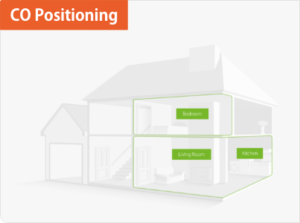Are you a
Homeowner?Are you a
Homeowner?
BS EN 50292:2013 states that carbon monoxide alarms should be fitted in:
The British Standard EN 50292 standard also recommends that an alarm is not fitted:
The importance of installing CO detectors is reflected in recent updates to legislation. Currently Carbon Monoxide Regulations vary throughout the UK, but the main legislation that applies to England and Wales includes the Smoke And Carbon Monoxide Alarm (England) Regulations 2015 and Building Regulations Document J.
Building Regs J – requires CO alarms to be fitted when any new or replacement solid-fuel appliance is installed
2015 Regulations – require CO alarms in private residential properties in any room with a solid fuel burning appliance.
Therefore, these two pieces of legislation only require CO alarms to be fitted with solid fuel burning appliances (such as an open fire or wood burner) in private properties. Not only does this fall short for social housing CO legislation, but it also excludes appliances such as gas boilers – which are also a risk. Following the Grenfell Tower fire tragedy the Government have now commissioned an independent review of the Building Regulations and Fire Safety. The final report will be submitted in spring 2018 and this may well result in changes to the Smoke and Carbon Monoxide Regulations 2015 and the requirement for all landlords to install CO alarms in all private and public rented sector properties that contain a fuel burning appliance of any kind, including social housing. For best practice it is recommended that landlords fit CO alarms in rooms containing any fuel burning appliance, not just solid fuel appliances.
With regard to installing new or replacement combustion appliances it is recommended to follow the Scottish Technical Handbook, which stipulates that certified carbon monoxide alarms need to be fitted when any new or replacement fixed combustion appliance is installed.
Fundamentally, advances in technology will make it easier – and possibly cheaper in the long run – to protect tenants from fire and carbon monoxide. It is becoming progressively easier for landlords to offer a higher standard of care to tenants, whilst simultaneously managing their own liability risk.
“For maximum protection also fit interlinked smoke and heat alarms”

*Please note: The above summary is based on FireAngel’s interpretation of the legislation, always refer direct to the standard for specific guidance
If you can't find what your looking for on our blogs and looking for further guidance and advice, our UK-based Customer Support team are on hand all week from 8:30am until 5:30pm, they can answer any further queries you may have on our products, solutions or services.